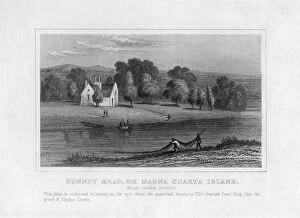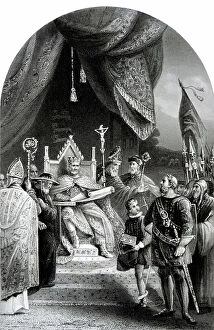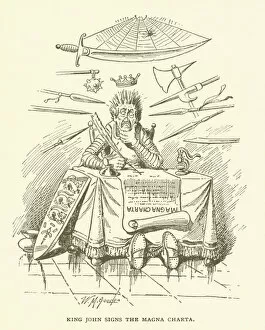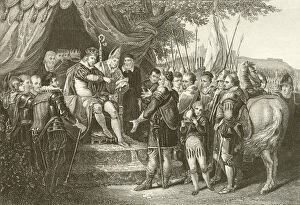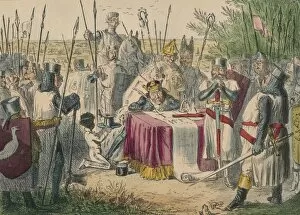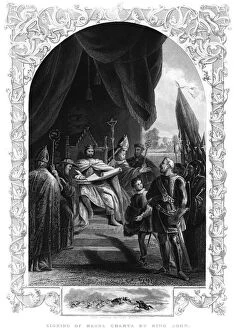Great Charter Collection
"Unveiling the Great Charter: King John and the Magna Carta" On June 5, 1215
All Professionally Made to Order for Quick Shipping
"Unveiling the Great Charter: King John and the Magna Carta" On June 5, 1215, a momentous event unfolded as King John of England affixed his signature to the historic document known as the Magna Carta. This pivotal act marked a significant turning point in history, forever altering the course of governance and individual liberties. In this captivating image captured by an unknown creator in 1783, we witness King John seated at a grand table adorned with regal insignia. With quill in hand and determination etched on his face, he signs his name upon the parchment that would become synonymous with justice and freedom. Surrounded by influential barons who had long yearned for their rights to be recognized, this scene depicts their solemn vow to achieve their cherished liberties. Their unwavering commitment is palpable as they stand united behind their cause. Preserved through time, a facsimile edition of the Magna Carta was first published in 1225. A remarkable vellum copy from 1816 showcases its enduring significance. The intricate engravings vividly depict King John's resolute actions while ratifying this groundbreaking charter. The seal of King John serves as an emblematic symbol representing both his authority and acknowledgment of limitations imposed by this revolutionary agreement. Its reverse side offers further insight into the intricacies surrounding its creation - a testament to meticulous craftsmanship. Fast forward to 1890 when color lithography brought new life to historical events like these. In one such vibrant depiction titled "King John and Magna Carta, " we are transported back centuries ago where hues breathe life into an otherwise monochromatic past. The legacy left behind by King John's signing of the Magna Carta cannot be overstated. It laid down principles that continue to shape modern democracies worldwide - principles centered around due process, equal rights under law, and protection against arbitrary rule.

